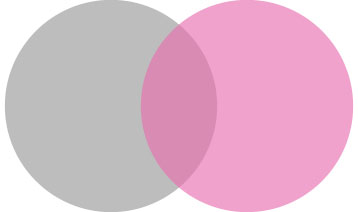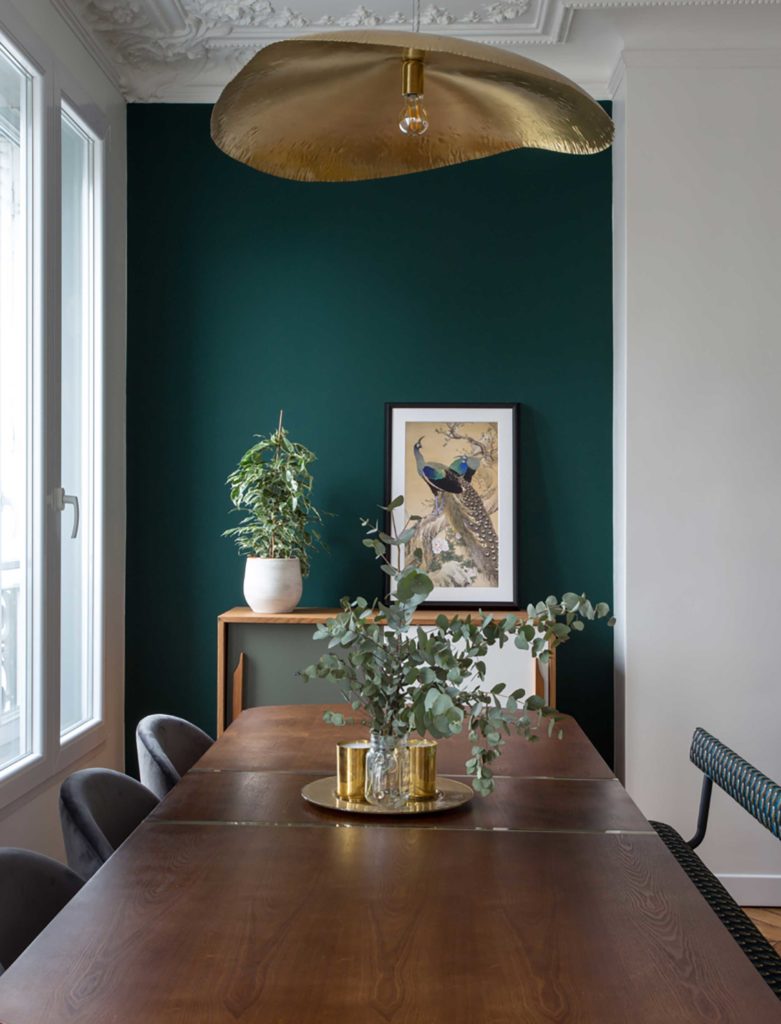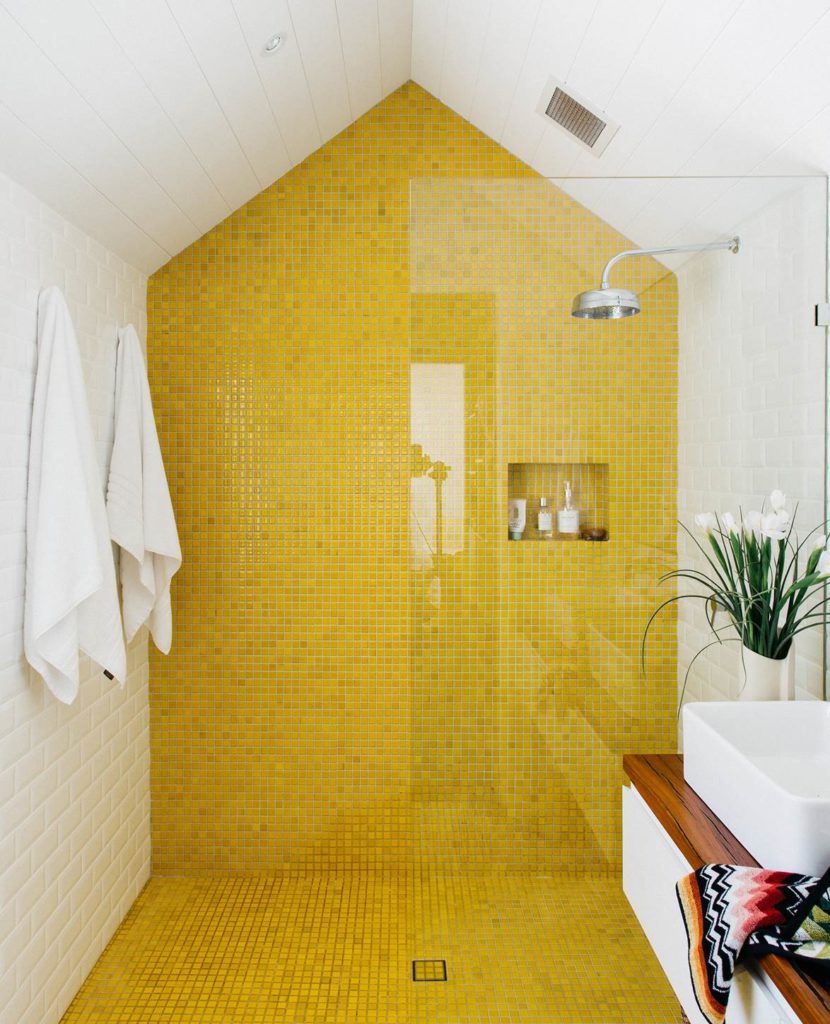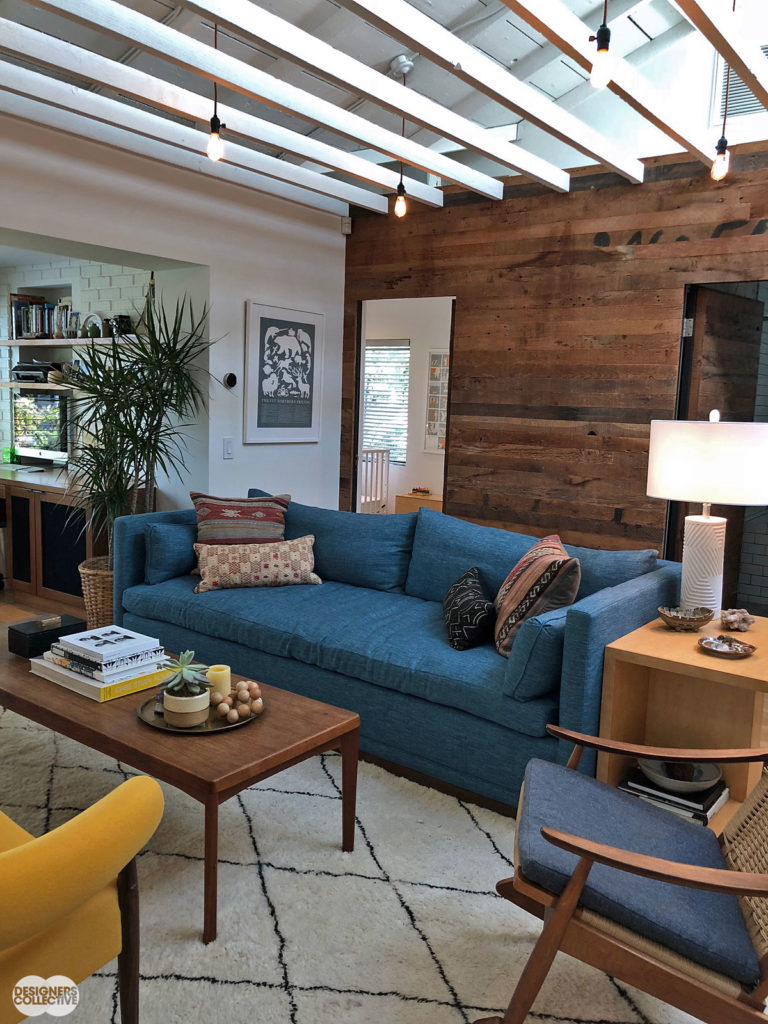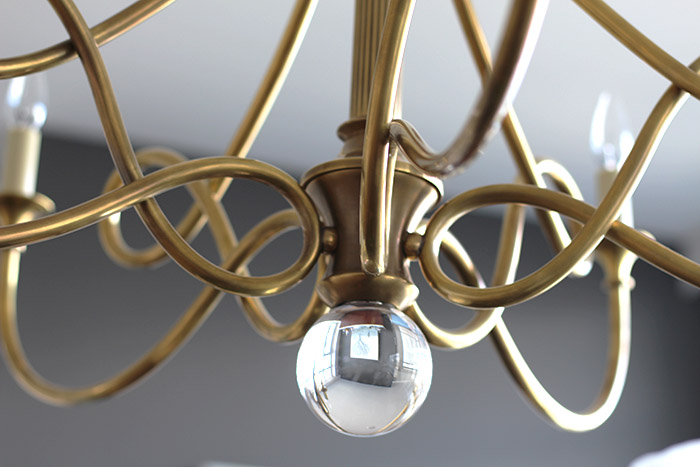
Design Lesson: Yes or No to Accent Walls?
Design Lesson: Accent Walls
There is a lot of resistance of late to accent or highlight walls. While they seem to be out of favour these days, I personally think they are the one of the best ways to transform a room with minimal effort, but with one proviso; they must be done properly. Accent walls can give rooms personality, they can ground a room, they can highlight artwork, and define space while creating dynamism and drama.
Ask yourself why you want or need an accent wall.
If your room doesn’t have a definite focal point, an accent wall can be used to create one; just make sure the wall you choose is the right one. An accent wall highlights or accentuates a focal point in a room. For example; if your room has a natural focal point like a fireplace, an accent wall can create a visual frame for it.
Don’t Ignore The Architecture!
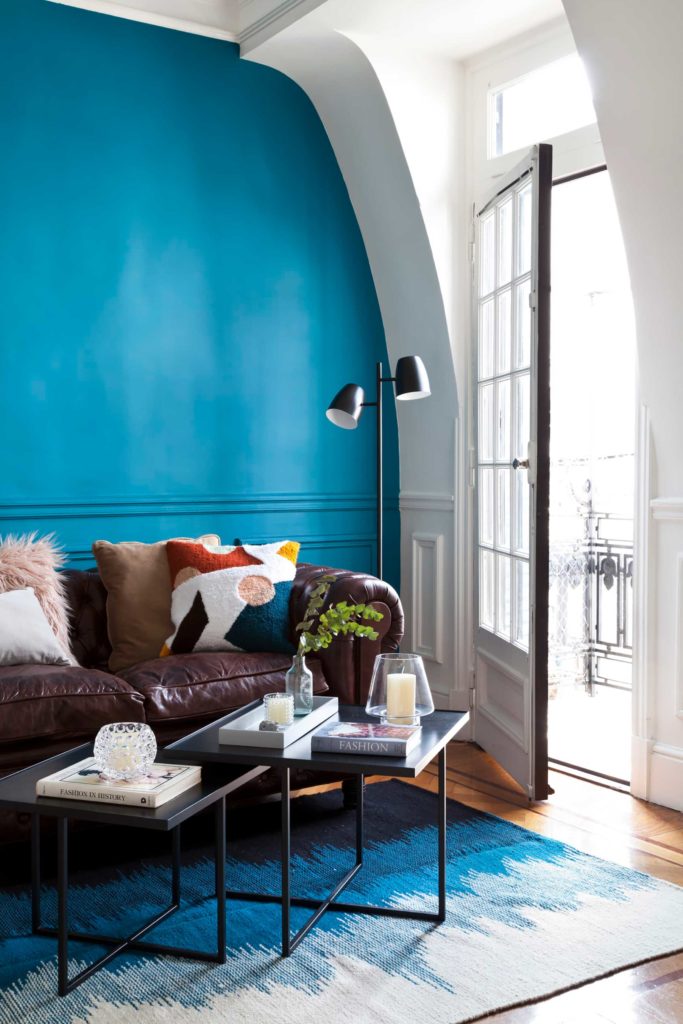
The bright blue of the wall draws attention to the slope and architectural elements of this room that would be less visible if the wall had matched the other walls and ceiling. (image from Emily Henderson)
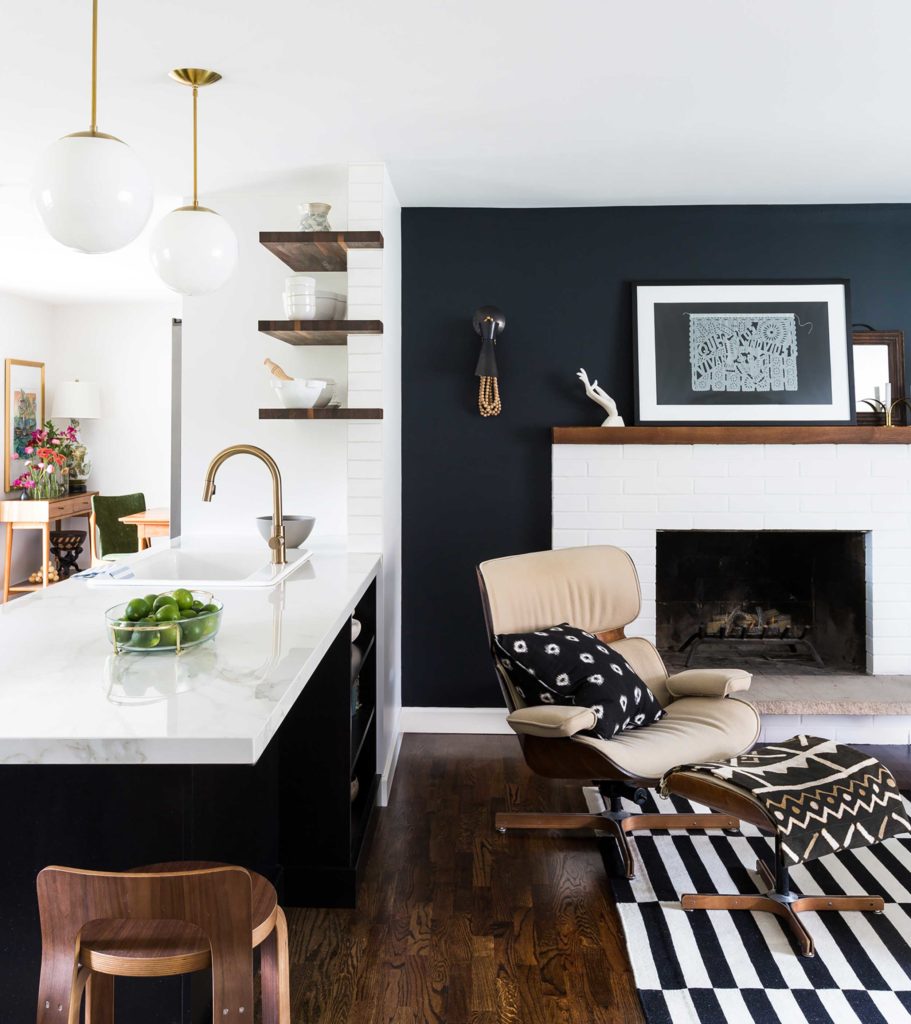
This accent wall makes the fireplace stand out. If the wall was white like the rest of the room the fireplace would blend in. Which would give the room a much different look. (image from Emily Henderson)
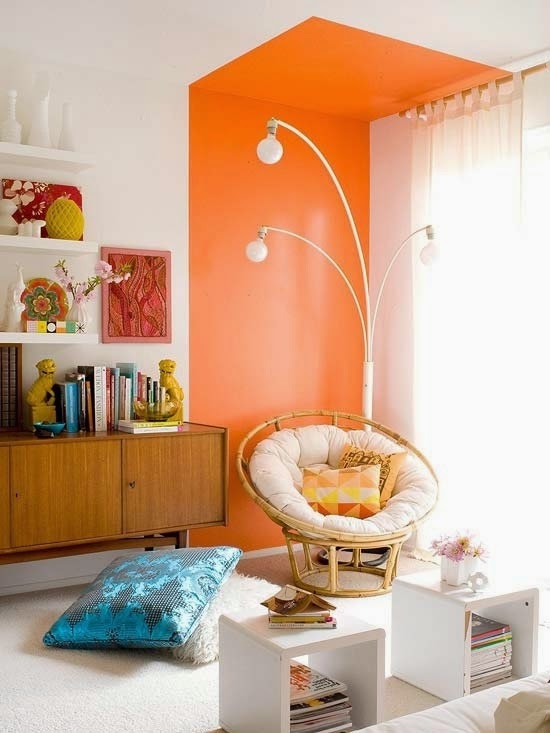
While this approach looks 2 dimensional, by highlighting the corner with the orange accent colour, the room illicits an architectural quality. Further it adds a modernist accent for the wicker chair, and articulates a piece of the space which otherwise would remain mute. (image from Apartment Therapy)
Accent colours can be used to manipulate the way your interior architecture looks and feels. It can even create the appearance of an architectural feature when all you have is a few blank walls and a flat ceiling.
Doing Accent Walls Correctly
To do accent walls well, think of your rooms as intersecting planes. A room has 4 walls. If your wall is at the end of a room it is defined on either side by a two adjacent walls. There is a natural end to the wall that makes sense. But many walls turn corners and thereby become 3 dimensional objects. If this is the case in your room make sure your accent colour turns the corner too allowing that wall to become a 3-dimensional element in the room. If you just paint one wall and stopped short of turning the corner the wall becomes flat, two-dimensional, superficial and not very convincing. When the accent turns the corner it becomes a volume, with two intersecting planes. If you don’t want to turn the corner, then you need to create a terminus for the colour. Shelving and built-ins are one way of creating a natural stop for the accent wall.
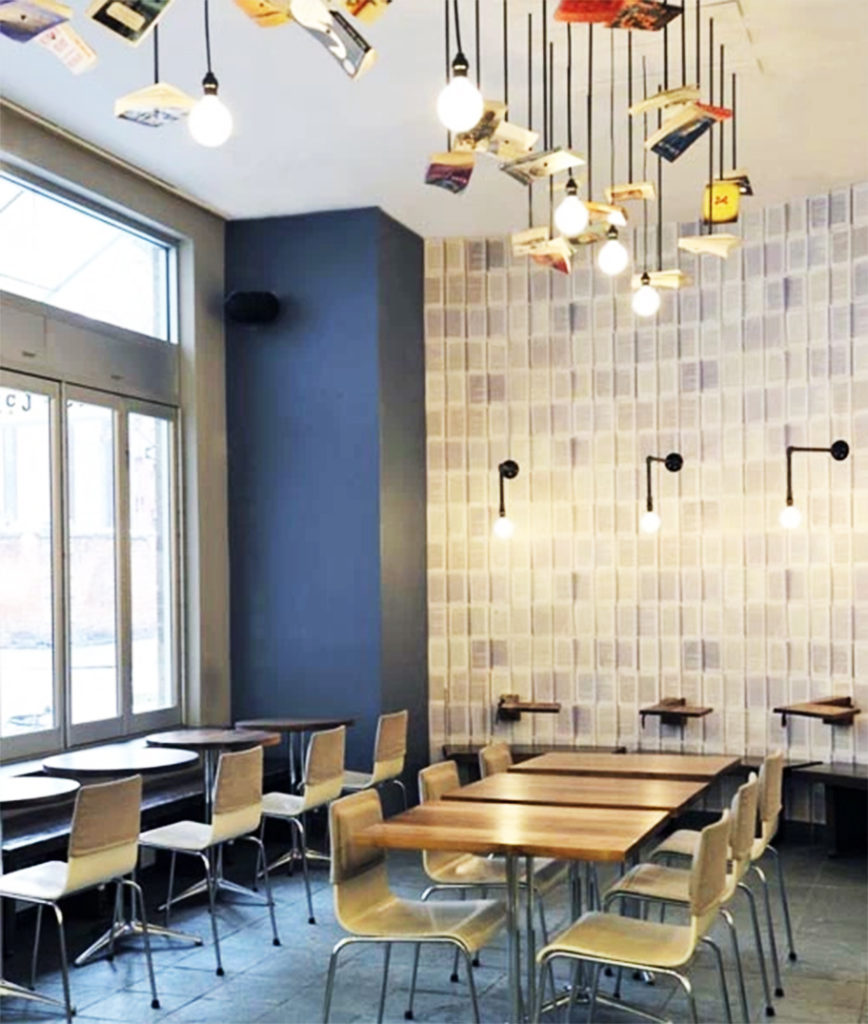
The accent colour in this room turns the corner which adds dimension and volume to the space which makes the space geometric and architectural.
How We Used An Accent Wall
In this project, we helped our client downsize from her large home into a newer waterfront condominium. The spaces were already lovely so our main job was to decide which pieces of furniture to keep and to pick new pieces to augment and improve the overall look.
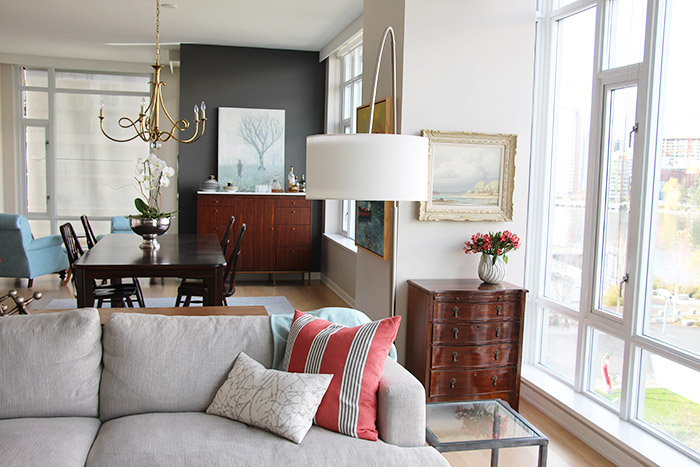
The dark grey accent wall gave our Olympic Village project some definition while integrating our clients traditional furniture.
We used a highlight wall to create a focal point and backdrop for the dining area. As the space is open-concept, there was nothing to define or give identity to the dining room. In addition, our clients furniture was dark while the condo walls were white. The accent wall grounded the dark furniture while defining the dining room.
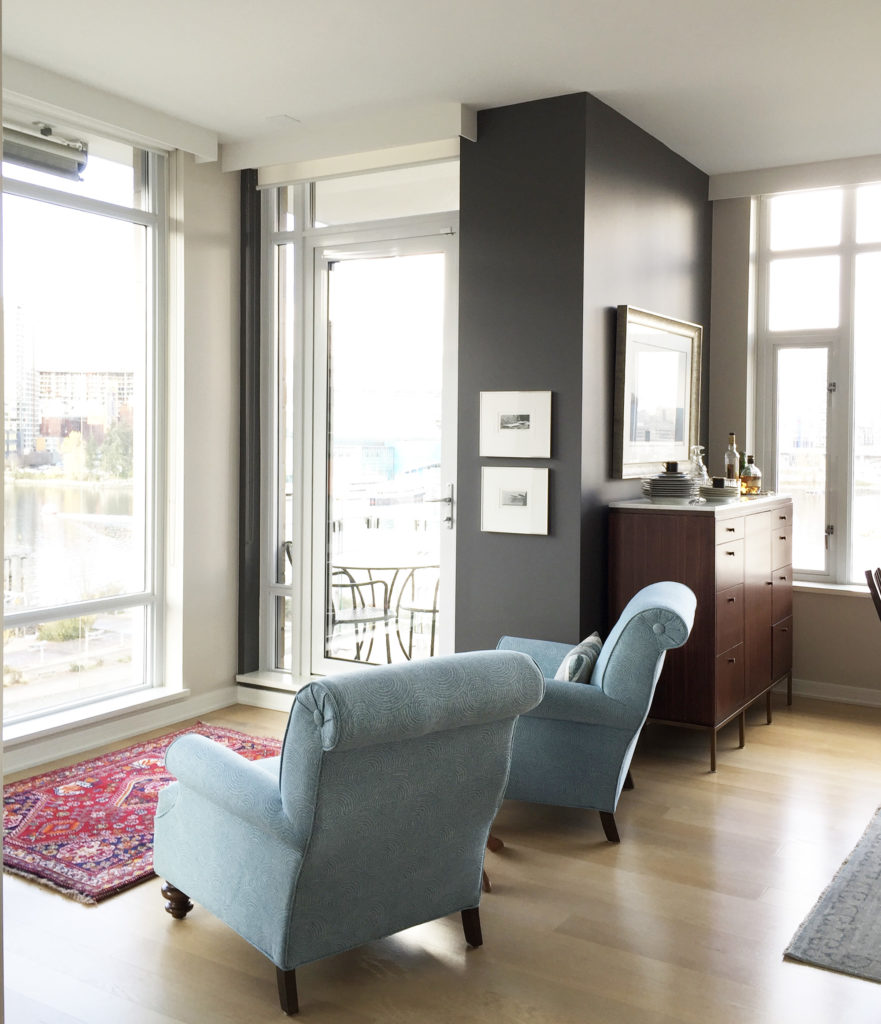
The dining room accent colour turned to corner to finish off the cube which gave dimension to the accent wall.
To avoid making the wall look 2 dimensional we looked at the wall as a cube and had the colour wrap the corner to accentuate the architectural qualities of the space. The overall effect conjured up a room where there wasn’t one, grounded the dark furniture, created drama, and most importantly gave personality to the space that started as a predictable, cookie-cutter space.
Other Ways to Create An Accent Wall
Paint is the easiest and most cost effective. You can also use wallpaper, tile, painted finishes, wood paneling and the list goes on. Just remember to ask yourself, why you want or need an accent wall and go from there.



